Total Solar Eclipse 2024
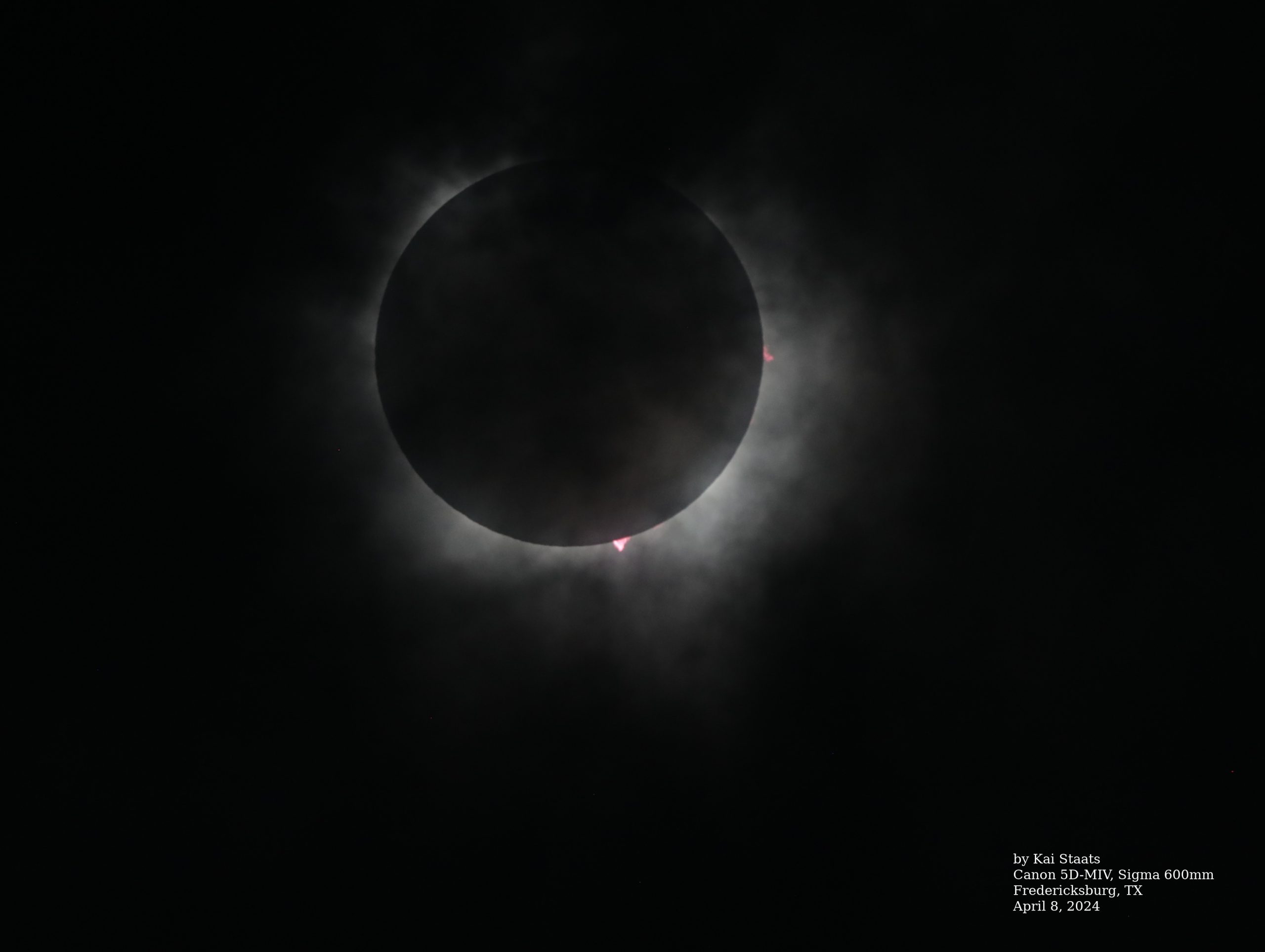
The total solar eclipse 2024
hosted by the Planetary Society
Fredericksburg, TX
April 8, 2024
Canon 5D-MIV with Sigma 600mm lens

The total solar eclipse 2024
hosted by the Planetary Society
Fredericksburg, TX
April 8, 2024
Canon 5D-MIV with Sigma 600mm lens
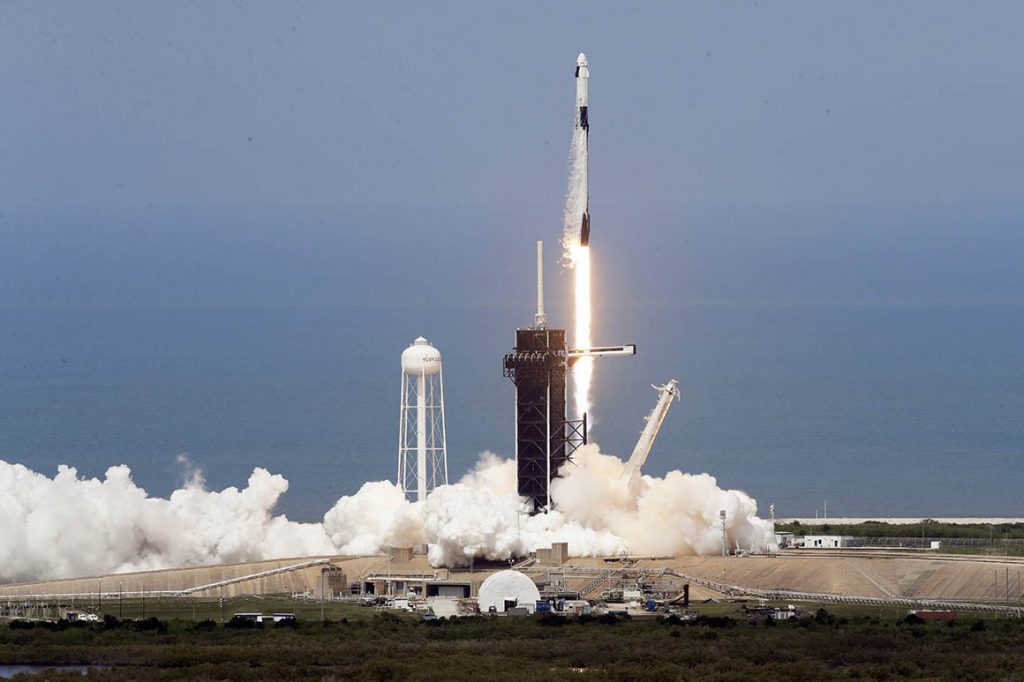
Yesterday was a day of mixed emotions and powerful memories as I watched the launch of the NASA/SpaceX Demo 2 mission. With the first Shuttle launch my brother, parents and I watched on TV, cheering for the thrill of that beautiful vehicle defying gravity for the first time. We were allowed (even encouraged) to skip school a few times over the years for subsequent launches. And I remember the tragedies of a launch and a re-entry failed.
With NASA and SpaceX taking humans into orbit in a vehicle that looks like something out of a Hollywood film, finally, we are again in motion toward the planets and stars.
At the same time, we struggle with such basic, fundamental frailty, so much anger and pain buried deep inside for the injustices that remain in this world. We are at a critical time when this planet yet holds a hundred populations in relative isolation, as they have lived for thousands of years, and soon we will place boots on Mars.
How can all the variations that make us unique find a means to thrive? Will we learn to uphold the diversity of our species and at the same time embrace a new, unified goal that pulls us through these critical, transitional times?
I hope this and many more launches to come remind us what we have and can do when we are working toward a common goal.
As one who has frequently lived in isolation, in 2013 on a remote ranch in Colorado six weeks without seeing another human, and now in a wilderness abode with the closest neighbor a quarter mile away, the nearest town more than thirty, I recognize that my situation is the opposite from those living in isolation in the city.
This disparity causes me to wonder, Would be more difficult to venture to Mars with crew mates, or totally alone? Living in a highly confined space for more than a half year is certainly one of humanity’s greatest challenges, while the practices of living alone, solo trekking, and meditation retreats are celebrated as a means to elevate the human experience.
Do we also celebrate interpersonal caring, space sharing, and communication in such a way as to uphold those who have “survived” group dynamics in close proximity for extended periods of time? Are there monks who practice daily banter rather than go months without speaking?
Perhaps the original Biosphere 2 was just such an experiment, in the end. Many lessons learned. Surely, every Apollo mission had stories to tell as does every U.S. Navy submarine captain.
In this home-bound arena many people are learning what it means to share a small space with others, or how to go it alone. What we can learn from this experience as we design and construct prototypes for off-world habitation? How can our space program benefit from what are now learning? What does personal space mean, when space is already limited? How can we train individuals to communicate in such a way as to uphold the communal space and respect personal space too? How do you assure astronauts will come out the other end of a long journey bound by the mission objectives and also bound by something even more powerful, friendship for a lifetime? And is over militar training the only way? How does architecture support or undermine interpersonal relationships?
Questions without immediate answers … we will see.
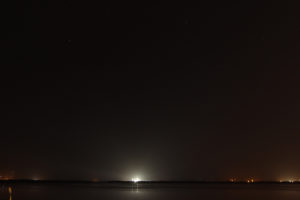 There is nothing quite like a rocket launch. The anticipation builds with the first arrivals, waiting in line from late afternoon into the evening, sun scorching, humidity suffocating. Hundreds, eventually more than 2500 people came from across the United States, from around the world to witness a dance between technology, gravity, and the stars. The possibility of catastrophe and success feel equally balanced, a tug-o-war that no one can fully predict. Only after the vehicle and one-of-a-kind payloads are far away from the launch pad, is there a sense of growing comfort to override the lingering fear.
There is nothing quite like a rocket launch. The anticipation builds with the first arrivals, waiting in line from late afternoon into the evening, sun scorching, humidity suffocating. Hundreds, eventually more than 2500 people came from across the United States, from around the world to witness a dance between technology, gravity, and the stars. The possibility of catastrophe and success feel equally balanced, a tug-o-war that no one can fully predict. Only after the vehicle and one-of-a-kind payloads are far away from the launch pad, is there a sense of growing comfort to override the lingering fear.
 In a time when the news is too often confusing, saddening, even heart wrenching, I am reminded of the ways in which we successfully come together to design, build, and delight in exploration of the unknown. This spacecraft started it’s journey four decades ago, with Carl Sagan, Louis Friedman, and NASA Jet Propulsion Laboratory director Bruce Murray … and my childhood mentor Carl Berglund and his team at JPL. He was the lead engineer on the original SolarSail, as described by Jason Davis for the Planetary Society in Old documents shine new light on NASA’s plan to send a solar sail to Halley’s Comet
In a time when the news is too often confusing, saddening, even heart wrenching, I am reminded of the ways in which we successfully come together to design, build, and delight in exploration of the unknown. This spacecraft started it’s journey four decades ago, with Carl Sagan, Louis Friedman, and NASA Jet Propulsion Laboratory director Bruce Murray … and my childhood mentor Carl Berglund and his team at JPL. He was the lead engineer on the original SolarSail, as described by Jason Davis for the Planetary Society in Old documents shine new light on NASA’s plan to send a solar sail to Halley’s Comet
The Planetary Society is now successful in launching not one, but two LightSails, demonstration that we live in a NewSpace era, no longer bound to the encumbered government organizations. In one week, LightSail2 will disembark from its carrier vessel and demonstrate the capacity for a spacecraft to maneuver, even alter its orbit around a strong gravitational body using electromagnetic impulses, reaction wheels, and the pressure of light from the sun.
 This was my full circle, a return to ages 6 and 7 through my early teens when repeat visits to NASA JPL helped shape my passion for space exploration. Thank you Carl, Dan Heim, Jim Bell and the School of Earth & Space Exploration at ASU, my associates at LIGO and ISU, and many more who have in the past decade brought me back into the space sciences and a foundational sense of hope for what we can do.
This was my full circle, a return to ages 6 and 7 through my early teens when repeat visits to NASA JPL helped shape my passion for space exploration. Thank you Carl, Dan Heim, Jim Bell and the School of Earth & Space Exploration at ASU, my associates at LIGO and ISU, and many more who have in the past decade brought me back into the space sciences and a foundational sense of hope for what we can do.
We now have a dedicated website for the Arizona State University, Interplanetary Initiative SIMOC project. There you will find a continuation of the “Postcard from Mars – SIMOC updates”. Please visit www.simoc.space for more!
At 8 pm this evening, the ASU Capstone team that has been developing the SIMOC game interface will have completed the first working prototype. This brings to fruition six months development of this unique agent model, and lays the foundation for its continued evolution.
As with all software projects, we begin with the blue sky as our goal, and a belief that we will reach that far. In October, November, and December of 2017 we engaged two calls each week, Saturday and Monday evenings. These 1-3 hour brainstorming sessions were a chance for the entire team to explore the possibilities of a scalable, mathematical model with a gaming interface.
We continually juggled the need to build a scientific foundation, a tool to be used for research with the goal to provide a gaming interface that engaged the non-scientific community (while yet producing scientific data, under the hood). While I have extensive experience in software development through my ten years as CEO of Terra Soft, and each of the ASU team came on-board with skills and experience ranging from Python to C, bash to CSS and SQL servers, none of us have built anything quite like this. None of us was truly the leader, nor anyone following. We all pitched in, challenged each other in the conversations, and slowly laid a design foundation that seemed to work.
ASU undergraduate astronomy student Tyler Cox came on-board in July 2017 to get the ball rolling. He built the first, working agent-based model (ABM) using Python and the Mesa library. He was able to quickly demonstrate a functional “astronaut in a can” model in which the initial parameters determined if the human crew of astronauts lived or died (they mostly died). Even our simple model with a light interaction between humans, a few species of plants, and a contained atmosphere proved tricky as even a minor imbalance in the system lead to catastrophic results.
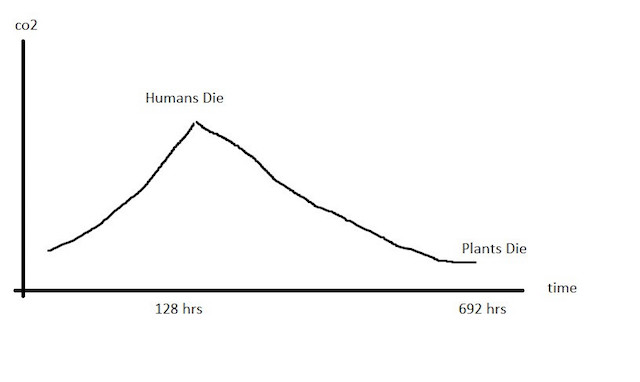
In January the capstone team duplicated Tyler’s work on an Amazon web server, integrating SIMOC into an SQL database instead of the original JSON configuration files. Following a minor setback in which we realized Unity was overkill and a good ol’ web interface would suffice, we reset our expectations and started again. The end result goes lives tonight at 8 pm Arizona Mountain Time. It will be simple, and a little rough around the edges, but the Launch screen, Configuration Wizard, and Dashboard (game interface) will be complete (for now).
I have enjoyed the pleasure of working with the following ASU undergraduate students through the Computer Science Capstone team: Ben McCord, Greg Schoberth, Terry Turner, Thomas Curry, and Yves Koulidiati. In addition, we have this year welcomed the incredibly talented, widely published space artist and habitat designer Bryan Versteeg of Spacehabs.com as a backbone to our design process. And most recently, Kevin Hubbard comes to us with a strong foundation in the social sciences, his intent to introduce a means by which we can integrate human social behavior into a more advanced version of our model.
 Just two weeks ago our work on SIMOC resumed. The holiday break was longer than anticipated (by me). I feel we lost some momentum from the pace we set last fall, but we are regaining now, shooting for a working prototype by the Interplanetary Initiative meeting March 5.
Just two weeks ago our work on SIMOC resumed. The holiday break was longer than anticipated (by me). I feel we lost some momentum from the pace we set last fall, but we are regaining now, shooting for a working prototype by the Interplanetary Initiative meeting March 5.
The team made a decision last week to abandon Unity as our game play engine, instead building a Javascript web interface. While we will have less total functionality, we are now more closely aligned with the current goals of this first version of our game play interface. And we will far more easily achieve the desired cross-platform support through a web interface. This decision cost us a week-long sprint of agile programming. Not a tremendous amount of time, but a loss that could have been avoided had I. A lesson learned, but no long-term damage done.
 With the start of the new year we welcomed Bryan Versteeg, world renowned space artist onto the team. He is now leading the design of the game play interface and playing “pieces”, the icons that represent the growing, off-world community.
With the start of the new year we welcomed Bryan Versteeg, world renowned space artist onto the team. He is now leading the design of the game play interface and playing “pieces”, the icons that represent the growing, off-world community.
Everyone desires a safe space, a home base, a place to return to when everything else in life is unsettled. For some, this is a certain room in the family home. For others, a timeshare overlooking the waterfront in a far-away town tourists have not yet discovered. Some travel to the cities while others escape, seeking something a little less whelming.
I too have my safe places. Buffalo Peak Ranch in the Colorado Rocky Mountains, our family farm in rural Iowa, and Sutherland, South Africa. This past week I was given the opportunity to return to the South African Astronomical Observatory. The drive from Cape Town to the Sutherland site is, no matter how many times you have made the journey, an adventure, a flight through space and time despite the confines of this planet’s gravity.
Those at the point of departure provide assistance in loading your travel bags and wish you well. Upon arrival, the guest house staff greet you by name, no matter how long since your last visit, and provide the keys to your dormitory. With hushed voices and careful motion we unpack and settle in, for the astronomers are yet sleeping. As with African game preserves where human visitors peer out from protective blinds to watch the animal world unfold, astronomers use telescopes to watch the cosmos evolve, to observe both the mundane and the most spectacular stellar shows.
Those areas in the world in which dark night skies yet exist are a kind of sanctuary, a place where we are reminded of what it means to be inspired. From our unique vantage point in this cosmic wilderness blind, we see new-born stars, middle-aged nobles, and ancient giants intermixed with nebulae, supernova, and massive black holes. To witness one rapidly rotating, small but massive neutron star consuming it’s neighbour through a dance that lasts eons is to watch the lion consume the elephant in painfully slow motion, frame by inexorable frame.
What we observe is explained through the application of physics, chemistry, and mathematics. While the interaction between stellar bodies is anticipated, even considered routine, there remains the daunting, bewildering, difficult to explain phenomena which send researchers into overdrive for decades.
It is the data of the routine which confirms our formulae. It is the unexpected which keeps us hungry for more.
Upon arrival to the guest house at the observatory I was filled with emotionally charged memories of my grandparents’ farm in Iowa. The anticipation that builds with the first glimpse of the domes on the horizon is to crest the edge of the Pride of the Valley farm, the final stretch of the curving road, and ultimate descent into the complex of white buildings.
Inside, each piece of furniture has its place and orientation, the sofas, the chairs adorned by cloth covers too easily wrinkled and caught in the spaces between the cushions. Throw pillows are returned each day to their proper position. The pool table is showing its age, the felt torn and the legs less stable. One can complain, or enjoy the added challenge. The library has been stripped nearly bare as the journals are now entirely digital. Yet the aroma from the kitchen, the sound of the kettle boiling, the light wind buffeting the west-facing windows all say, ‘Welcome home!’.
By mid-afternoon intense conversations unfold as the engaged astronomers rise and those of us who retain fairly normal sleeping hours share the dining hall and common space. Steven, Retha, and I, the next day joined by Willie and Lisa covered more topics than I do recall, from the generation of water from humid air to the politics of South Africa, to data reduction and the application of Machine Learning against the wishes of those who are not yet ready to let go of their scripts and proved techniques.
With all telescopes at the SAAO observatory now capable of being remotely controlled, there is debate about the value of sending astronomers to these remote locations. For certain, the mechanical aspects of pointing the instrument to a distant object, capturing photons, and moving onto the next can be done without a being on-site. Yet, it is the draw of the dark night skies, the bliss of isolation, those moments of being only here, right now, that draw us into this place.
It is my experience and my hope that astronomers will continue to come to these places for the same reason we venture to witness the elephant and the lion, not on-screen. The sound of the wind whipping over the top of the open dome, the smell of the machine oil, the sensation that one has stepped into a spacecraft destined for anywhere cannot be reproduced through a remote connection.
Until the next visit to Sutherland, I will recall that for those brief four days, I enjoyed a return to one of my safe spaces, where both the routine and unexpected unfold every night.
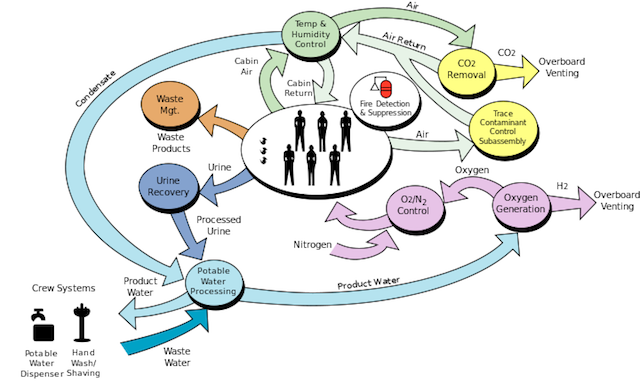
ECLSS
An Environmental Control and Life Support System (ECLSS) enables humans to survive in a semi-open (Fig 1) completely closed (BioSphere II, Lunar Palace) ecosystem. In a traditional model, all components vital to sustaining life are tracked by a network of system monitors. Careful estimations are made for the quantity of humans in the given environment for a particular period of time, against the resources provided. The amount of work they perform, the food they consume, and the number of hours they sleep all affect the duration and quality of the mission (see Wikipedia commons image, above).
In this linear tabulation of resource allocation and consumption each human actor or agent is treated as an IN and OUT box, a system which transforms one resource of a particular quantity into a bi-product which is either reused or discarded as waste.
To use this model for a massively scalable system (4-40,000 people) will result in an arduous, ultimately failing bookkeeping effort of tracking values such as the quantity of molecules of oxygen, carbon dioxide, water, calories, Watts or Joules. Through this linear method, we will be less likely to discover causality. If instead we can build a model which considers the relationship between two or more systems, which are themselves maintained by a constant input of energy and mass flow against the natural progression toward system breakdown, then we will gain a better sense of what it means to scale a human colony in a totally foreign, inhospitable environment, from the first astronauts to arrive to a genetically viable human gene pool that can, of its own accord, carry the human species forward.
A rendezvous with Rama
In our imagination, humans in a distant future have gained the ability to travel vast distances in relatively short periods of time. An exploratory mission discovers a massive, abandoned space station in orbit about a planet which itself is not conducive to life as we know it. We attach a shuttle craft to the hull of the outpost, tens of kilometers in diameter, and let ourselves inside. There does not appear to be a single living creature inside. Nothing moves, not even automated repair and management systems.
Immediately, we ask, For how long has this outpost been abandoned?
To answer that question, we determine if the atmosphere is breathable for humans, and we remove our helmets. The air is dry, cold, and devoid of the smell of decay. There is an odor of machine oil and mechanical systems.
While completely sealed, and safely parked in a non-decaying orbit far above the drag of the atmosphere, this habitat is decaying. It is slowly degrading. No matter how well crafted, no matter how perfectly every nut, bolt, and weld is applied, eventually this artificial world will fall to pieces.
You can point to the systems which are no longer being maintained: water delivery, sewage removal, atmosphere recycling systems. The ship’s hull is continuously bombarded with radiation from the binary star system 1.5 AU from the orbit of the host planet. Each of these is breaking down due to a lack of maintenance.
As we explore the inner halls and chambers of this orbiting world we take note of the integrity of the structure. Are seals in tact? Are lubricants leaking? Do the doorways to passages open and close securely? Do motors yet spin and pistons yet pump? Or have all moving parts seized and become immobile?
While we tend to measure breakdown over time, we can also measure the disorganization of the structure, at the macroscopic and microscopic levels. Physical breakdown of a mechanical system can be described as a degree of current functionality in comparison to its original design parameters. In this alien outpost, despite the incredible technology employed, we do recognize the failure of some systems (once rebooted and encouraged to operate again), such that we are able to estimate their original function and design specification. The difference between full capacity and the current state is a ratio which can be described as a normalized function, from zero through one [0 … 1] where 1 is complete, working order and 0 is a seized, non-functioning machine, no longer providing the intended service, and thereby no longer supporting this habitat nor the inhabitants who once occupied it.
This breakdown, the unavoidable decline of all bounded systems can be described by the single variable entropy, or the measure of organization.
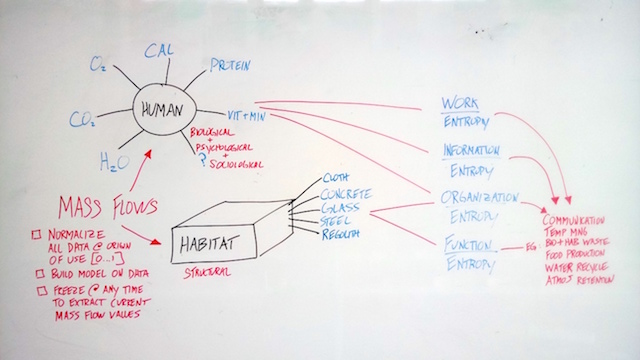
So let’s take a few steps back, to a time when the alien station was yet inhabited. We can safely assume that at that time there was a maintenance schedule, a system by which the entire structure was maintained through routine inspection, repair, and replacement. This could have been done by the macroscopic hands of the aliens (who appear to be of a similar stature to that of the human explorers), an automated array of robotic assistants, or by microscopic nanobots whose function is to maintain the integrity of all functional systems, at all times, such that no weaknesses ever develop, and no systems ever suffer from catastrophic failure.
Either way, there is a cost to this maintenance, the work (w), or energy expenditure and mass flow to maintain the function (f) of the habitat. Organization (o) of this work requires management of information (i). As such, we have defined a means by which we can measure the status of a closed ecosystem:
Function, then, is a relationship between the Organization, Information, and Work attributed to the sustained management of the habitat, or its total functionality. While each of these could be measured in any of number methods, we will place each in a tightly bound relationship to entropy, such that entropy is the counterpart, the undoing of organization, information, work, and ultimately the function.
Now, we have a new means of monitoring the health of the physical parameters of an isolated habitat, as:
Where the ratio is a measure of the effort or energy required to ultimately maintain a self-contained ecosystem without ever having had to count the molecules of oxygen, water, or complex carbohydrates. In a newly built habitat, the entropy is low, therefore the maintenance is low as well. But as the habitat ages, or if catastrophe strikes, the entropy will be large, thereby requiring greater organization, information, and work to bring it back into compliance with sustaining human life.
We are relating the current state of the system to its design specification over the inevitable force of entropy.
Back to Mars
If we employ a normalized set of values, as discussed above, then the maths is quite simple, even as we scale this colony from 4 to 400 to 40,000 individual habitants. This is not to say we will not count molecules nor worry ourselves with the atmospheric pressure in the greenhouse, for our model is in fact based on data accumulated from close-ecosystem and bioregenerative experiments on Earth. But to find those non-linear functions of scalability, we must remove ourselves from the line-item bookkeeping which would otherwise overlook the economies of scale which will surely affect a growing colony.
The habitat itself is designed to sustain human life in an otherwise inhospitable environment. As such, we can model the human lives of the astronauts by making certain the habitat itself is functional. We have established a potential framework built upon four parameters which enable us, at any point in the run-time of our SIMOC model, determine the relatively “health” of the physical structure of the habitat.
Now, let’s turn our attention to the health of the human habitants for which the habitat was designed and built Like a structure which is built from concrete, steel, glass, and soil, humans are composed of building blocks. Water, oxygen, calories, protein, vitamins and minerals make up the fluid and solid systems of our bodies.
How do we bring such discreet elements into the SIMOC model without managing each and every molecule that supports the lives of the human inhabitants of the isolated colony? In much the same way as we did with the habitat, we can look at the construct of the human body, and what breaks down over time.
One can see the human body as an assembly of points of failure, critical systems which must be satisfied. Oxygen intake, carbon dioxide exhalation, water, calories, nutrition, and waste management are as mission critical to the human body as is a sealed, pressurized shell to a habitat.
If we see humans as the caretakers of the habitat, that is, the principal labor force responsible for its anti-entropic upkeep, and the habitat as the physical construct which enables the humans to survive in outer space, or on a remote planet, then we have created a positive feedback loop in which each unit supports the other.
What happens when automated or directed robot labor replaces the human maintenance engineer? The labor is shifted from one entity to another, but the total work required to maintain the habitat is sustained, and the total quantity of humans supported, given the immediate infrastructure is not changed. Rather, the caloric expenditure of each human in the habitat is shifted to other functions, and the economy of scale is realized.
Science Cafe Cape Town
29 October 2015
A week ago Thursday, October 29, I was honoured by the opportunity to speak to the Science Cafe Cape Town. Held at Truth Coffee, the Science Cafe offers “monthly meetups for anyone with a curiosity in science, a chance to chat with local experts about cutting-edge research in a relaxed setting.”
Indeed, the unique venue was ideal for an interactive conversation with an audience of more than one hundred. Following a brief introduction, I showed a short film produced while I was working as an embedded filmmaker and technician at the Mars Desert Research Station, Utah, in January 2014 with MarsCrew134. I then moved through two dozen slides in order to bring the audience into an awareness of the many organisations that are now working toward taking humans to Mars, the asteroids, and beyond. I introduced a few of the many technical and financial challenges, and offered topics for consideration, including “Why should we go to Mars?”
 For me, as a speaker, it was a most enjoyable event. My thirty minutes presentation was followed by an hour of questions, which is most unusual and incredibly fun. Thanks to all who attended, for such being the most engaging audience I have ever enjoyed.
For me, as a speaker, it was a most enjoyable event. My thirty minutes presentation was followed by an hour of questions, which is most unusual and incredibly fun. Thanks to all who attended, for such being the most engaging audience I have ever enjoyed.
I opened the evening with full admission that I am a “jack-of-all-trades, master-of-none” and promised to let the audience know if I could not answer a question asked. This kind of presentation is new to me. Informal and wonderfully engaging, it was as much a conversation with new friends as it was a lecture. Yet in that informality, I was not as accurate with some of my answers as I would have liked to have been.
This past week I have conducted a series of fact-checks, to correct some of my answers and to build upon the subjects addressed. What’s more, Kerry Gordon, co-founder of the Science Cafe Cape Town granted me the opportunity to edit and clean the audio recording of my presentation. In so doing, I was able to remove the inaudible questions (too far from the microphone) and tighten a few of my answers in order to be more concise. The total recording is now just under one hour, including the short film.
In this follow-up research process, I have learned a great deal. I hope you will as well.
CAUTION! The proverbial rabbit hole runs deep. Myriad pathways unfold when investigating such a tremendous topic as space exploration. Dive in, but don’t expect to stop … until you walk on the face of Mars or build a future such that your children’s children may climb aboard a massive vessel bound for a neighbouring star.
RESOURCES
CORRECTIONS
ADDITIONS & VALIDATIONS
The above expands upon my answer of spectroscopy and acceleration by the gravitational field (gravimetry). Further conversation with Stephen Potter, Head Astronomer at the South African Astronomical Observatory offers, “Visual size is a first rough guess. Orbital period and distance cannot give you the mass. You can put any mass at a specific period+distance. E.g. replace Earth with Jupiter and it will have the same period and distance. Moon masses can be refined by studying the deviations in their orbits as a result of their interactions with other moons. So this now becomes a more complicated N-body problem, which you refine with more longer term observations. e.g. JPL has one of the best solar system N-body simulations right now. Only once you get close with a flyby can you refine it further. I.e. your spacecraft becomes the test mass.”
“Cosmic rays are immensely high-energy radiation, mainly originating outside the Solar System. They may produce showers of secondary particles that penetrate and impact the Earth’s atmosphere and sometimes even reach the surface. Composed primarily of high-energy protons and atomic nuclei, they are of mysterious origin.”
“The term ray is a historical accident, as cosmic rays were at first, and wrongly, thought to be mostly electromagnetic radiation. In common scientific usage high-energy particles with intrinsic mass are known as “cosmic” rays, and photons, which are quanta of electromagnetic radiation (and so have no intrinsic mass) are known by their common names, such as “gamma rays” or “X-rays”, depending on their origin.”
“Galactic cosmic rays are one of the most important barriers standing in the way of plans for interplanetary travel by crewed spacecraft. Cosmic rays also pose a threat to electronics placed aboard outgoing probes. In 2010, a malfunction aboard the Voyager 2 space probe was credited to a single flipped bit, probably caused by a cosmic ray. Strategies such as physical or magnetic shielding for spacecraft have been considered in order to minimize the damage to electronics and human beings caused by cosmic rays.”—verbatim from source